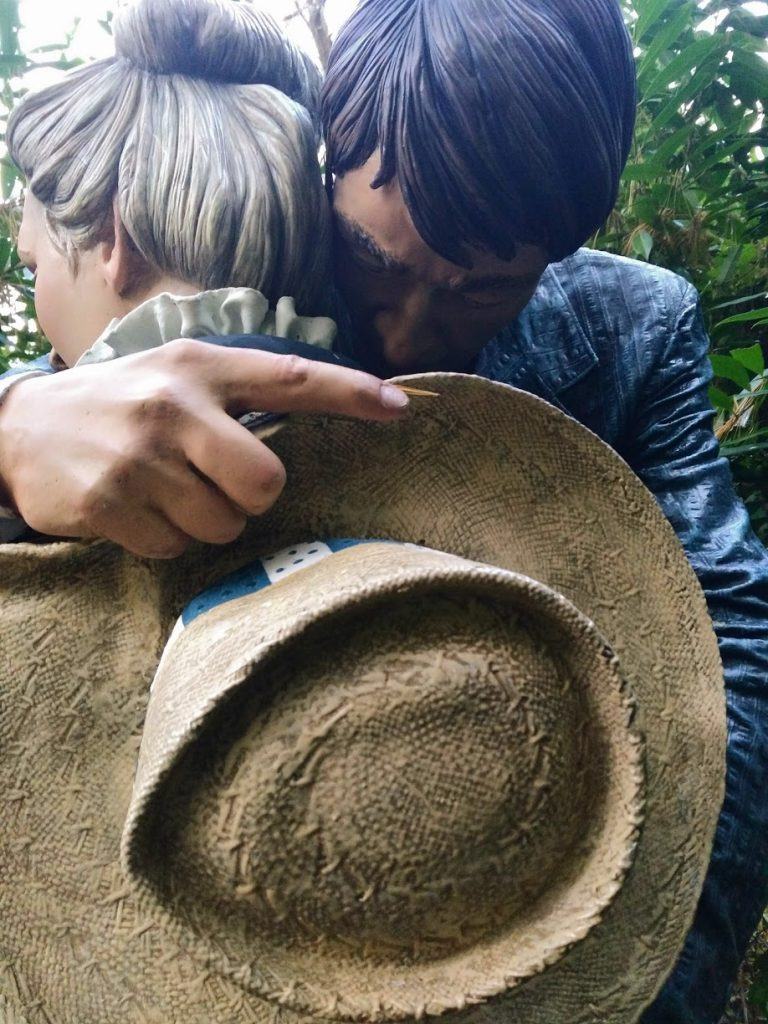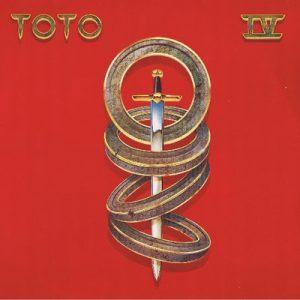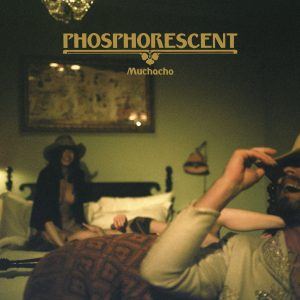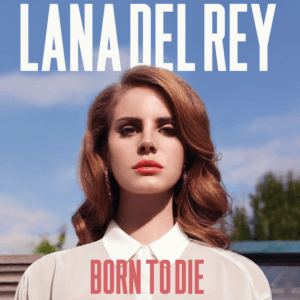by Lexi Lerner

“All the greatest hits from the past forty years have the same four chords,” Axis of Awesome taught us a decade ago. “You can take those four chords, repeat them, and pump out every pop song ever.”
The band has since released multiple versions of its famous four chord medley, cataloguing more than 80 chart-toppers that follow pretty much the exact same structure. Amongst them: “Let It Be” by the Beatles, “Can You Feel the Love Tonight” by Elton John, and “Under the Bridge” by the Red Hot Chili Peppers.
While they may have lifted the veil for some lay listeners, Axis of Awesome did not invent the music theory behind the four chord song. In fact, that progression has served as the backbone of popular music since the thirties, and its prevalence has only increased with time.
Recall such recent four chorders as “Despacito” by Luis Fonsi with Daddy Yankee, “Edge of Glory” by Lady Gaga, “Someone Like You” by Adele, “Call Me Maybe” by Carly Rae Jepsen, and “We Are Never Ever Getting Back Together” by Taylor Swift. Roll your eyes if you must, but these were seminal to the Billboard Top 100 when they came out. The trend has its fingers in far more pies than just pop music; there are four chord songs as indie folk as “The Sounds of Silence” by Simon and Garfunkel, “In the Aeroplane Over the Sea” by Neutral Milk Hotel, and “Lying to You” by Keaton Henson.
Music wasn’t always like this; Brahms and Wagner and Strauss would all sob at what earns airplay these days. So when the permutations, instrumentation, length, and knowledge of music are more boundless than ever, why do we settle for the same four chords? And if most songs are built on that, what makes certain ones destined for mixtapes and wedding dances and long car rides and summer soundtracks? Why do we consider anything to be special?
An even more basic inquiry is why do we like the things we like. “Because people in power tell us to,” one friend asserted. They’re a creative manager living in a city where the word “creative” is more often used as a noun than an adjective.
That’s a depressing approach, that all cultural taste trickles down from the few to the many. It’s even more depressing when one considers the potential (and likely) manipulation in that – narcotizing the masses. “Whenever society wants us to not worry, they just churn out another song,” another friend said. “They’re conspiring.”
I’m not sure we need tinfoil hats yet, but brainwashing aside, aural consumers have been lazy with their demands for something different. If we don’t demand it, industry won’t provide it. In a capitalism-driven, expedience-rewarded music market, the four chord song is the most basic musical unit (aside from the commercial jingle) that is both highly marketable and profitable. It’s easy to write, package, swallow, learn and regurgitate.
The parsimoniously evolved four chord song is all about accessibility. We see this accessibility manifest in lyrics (most songs rhyme), rhythm (most are written in 4/4 time – common time), and harmonic structure (see below.) What makes the four chord song’s accessibility penetrative to the human mind is its (1) legibility and (2) memorability. Lyrical and harmonic repetition reinforce whatever intrinsic qualities of legibility and memorability the exact musical phrases have. That’s why as we groan every time Justin Bieber sings, “Baby, baby, baby, ohhhh,” we also can’t forget it, or not sing along – even if in parody (and agony.) It’s easy to follow and thus easy to fall for.
Each shiny new four chord song that emerges on Youtube Trending or Z100 has just enough novelty to make it worth listening to (through timbre, lyrics, etc.) and just enough familiarity to be accessible. In its chords, its lyrics, and its balance between novelty and familiarity, it contains just enough tension and release – low stakes, but still stakes – to give us something worth listening to.
That careful construction of tension and release is inherent in the DNA of the four chord song. By virtue of the nucleotide-like chords themselves, the progression is designed to be low-stakes compelling. They’re the beating heart the song centers around (I), the chord that heroically leads to that heart (V), the shadow that crosses the heart (vi), and a versatile plateau point (IV).
Let me explain.
 The I (“one”) chord, also known as the tonic, is usually the arrival point of a song; it’s the heart of the home key, and thus whenever it’s played, it eases the tension that the harmonic structure built up. For example, “Africa” by Toto is in the key of A major, and thus the I chord is an A major chord. Moreover, the word “Africa” in the chorus is hit on the I chord, which gives it an extra sense of importance and soaring jubilation:
The I (“one”) chord, also known as the tonic, is usually the arrival point of a song; it’s the heart of the home key, and thus whenever it’s played, it eases the tension that the harmonic structure built up. For example, “Africa” by Toto is in the key of A major, and thus the I chord is an A major chord. Moreover, the word “Africa” in the chorus is hit on the I chord, which gives it an extra sense of importance and soaring jubilation:
(vi) I bless the (IV) rains down in (I) Aaaafri- (V) -caaaa
The V (“five”) chord, called the dominant, is the easiest way to lead into the I chord. The jewel of the V chord is the leading tone, or the note that’s right beneath the I’s root. In “Africa,” the V chord contains a leading tone of G#, which is the note just a half step below the A that’s the tonic of the song. On a melodic level, Toto’s David Paich sings Aaaa- on an A, and -fricaaaa on a G#. On a harmonic level, “Africa” presses forward by having the I lead to the V, not the V to the I. Note, in fact, how none of the songs listed have V->I transitions except for “Lying to You” at the end of a long and complex sequence. It’s too satisfying to keep generating momentum.
 Instead, most modern songs* opt for what’s called a plagal cadence (yes, welcome to Year 3 of music theory), which is when IV resolves to I (as opposed to V→I.) The IV (“four”) chord, known as the subdominant, doesn’t lead to the deliciously satisfying feeling as the dominant (V) does when resolving to the tonic. But it works just well enough to keep the wheels of a song turning. For example, in “Song for Zula” by Phosphorescent:
Instead, most modern songs* opt for what’s called a plagal cadence (yes, welcome to Year 3 of music theory), which is when IV resolves to I (as opposed to V→I.) The IV (“four”) chord, known as the subdominant, doesn’t lead to the deliciously satisfying feeling as the dominant (V) does when resolving to the tonic. But it works just well enough to keep the wheels of a song turning. For example, in “Song for Zula” by Phosphorescent:
(I) Some say love is a burning (V) thing
That it (vi) makes a fiery (IV) ring
Oh, but I know (I) love as a fading (V) thing
Just as (vi) fickle as a feather in a (IV) stream
What pushes each couplet into the next is that IV→I transition, which isn’t as satisfying or final as if it were a V→I cadence each time. Which is why “Song for Zula” sounds like it’s rac[ing] right out on the desert plains all night, with nowhere to go but on and on.
 Lastly, the vi (“six”) chord, called the submediant, is the dark shadow of the I chord. They share two of the same notes, but the vi provides a minor twist to the otherwise major chord set. Take “Born to Die” by Lana Del Rey, analyzed as if it were in G major.
Lastly, the vi (“six”) chord, called the submediant, is the dark shadow of the I chord. They share two of the same notes, but the vi provides a minor twist to the otherwise major chord set. Take “Born to Die” by Lana Del Rey, analyzed as if it were in G major.
Here’s the verse:
(I) Feet don’t fail me (V) now
(I) Take me to the finish (V) line
Oh, my heart, it (IV) breaks every step that I (vi) take
But I’m hoping at the (V) gates, they’ll tell me that you’re mine
And here’s the chorus (the bridge has a similar structure):
(IV) Come and take a walk on the wild side
(vi) Let me kiss you hard in the pouring (V) rain
You like your girls (IV) insane
Choose your last words
(vi) This is the last time
(V) ‘Cause you and I, (IV) we were born to (vi**) die
While the song can be analyzed in G major (I), the chorus completely lacks that chord; instead, it keeps resolving to E minor (vi). Moreover, all harmony drops out on the word “die” in the chorus and Lana a cappella croons an E (vi). This use of the E as both a harmonic and melodic tool, like the word “Africa” in the eponymous song by Toto, tells us about the message of the song – in “Born to Die,” darkness wins out.
Why do we accept the same four chords? emerges as a common refrain in our lives. Why do we settle into, and for, the routines that we do? It’s not just the nine-to-five; it’s the monomyth our ancestors lived and that we cannot help but also live.

Apparently there are only seven archetypal plots from which all stories spring. As Christopher Booker, author of The Seven Basic Plots, writes: “Once we become acquainted with this symbolic language, and begin to catch something of its extraordinary significance, there is literally no story in the world which cannot then be seen in a new light: because we have come to the heart of what stories are about and why we tell them.”
We love hearing the same narratives in new forms. We live through associations. How this person reminds us of that person, how this song sounds like this song sounds like this song. How (some of the more New Age of us believe) the universe has a resonant frequency that our bodies hum as well. According to Boethius, there are three kinds of music: the music of the universe, the music of our bodies, and the music our instruments make to glorify it all.
Recently a friend told me they could fall in love with anyone if they spent enough time with them.
I’d like to explain why one particular four chord song – called “Medicine” by Daughter – is one of the most beautiful works of music I’ve ever heard.
Yes, the ethereal instrumentation – more air than music – and Elena Tonra’s angelic vocals render this song aurally otherworldly. But really it’s about simplicity in the face of complex emotion – how the song is like staring at yourself in the mirror. You can still be what you want to. You have more free will than the destiny of those four chords let you think. You could go home, escape it all, it’s just irrelevant.
It’s just another four chord song, like so many others; but if it were any more complicated, its internal philosophy would be obscured, if not compromised. Through its simple structure, its nuance clarifies itself. For all my musical training and snobbery, I don’t want it any other way.

In some readings of reality, everything crystallizes like fractals – at every scale, all the time – even when perspective prevents us from seeing its superstructure. The four chords that we live our lives by is just one fractillian crystallization of a musica universalis, also known as musica mundana: some grander monosong of humanity or biotic life or the universe.
And thank goodness. Because let’s be honest – to the question of Why do we accept the same four chords?, it’s not truly a matter of acceptance; we cling for dear life. There is intense comfort in predictability.
By contrast, imagine living in a world without precedent or arc, where the future has no lines for us to thoughtfully color in and pat ourselves on the back for. Imagine taking true and total responsibility.
Thank goodness we don’t have to do that, since there are seven archetypal stories, four chord songs, and one monomyth to tell us how things go.
*Mid-century pop songs had more V->I transitions, and the “I vi IV V” permutation is even called the 50s progression; music evolved over time to contain softer harmonic blows.
**For the theorists out there who’d argue the IV is held through the word “die”, there is a second voice, barely an echo, that sings a B over Lana’s E, thus scaffolding the vi.
